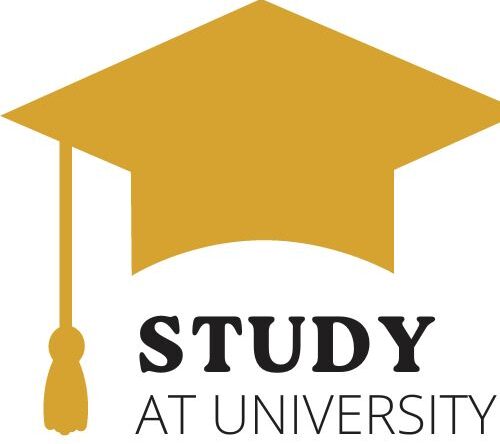Have you ever wondered what exactly direct admission in university means? If the concept seems unfamiliar or confusing, fret not! This article aims to provide a clear and concise explanation of what direct admission entails. Whether you are a high school student eager to explore your higher education options or a parent hoping to gain insight into the college application process, this article will shed light on the topic and help you navigate the exciting world of direct university admissions. So, let’s dive in and unravel the mystery behind direct admission in university! Direct admission in university refers to a type of admission process where students can secure a place in a university without having to go through a traditional entrance test or examination. Instead, they are directly admitted based on their eligibility criteria and academic requirements. This alternative pathway to higher education offers several advantages and disadvantages, which we will explore in this article.
Definition of Direct Admission
Direct admission, as the name suggests, allows students to secure a seat in a university without the need for taking entrance tests or examinations. It provides an alternative route to higher education, bypassing the traditional admission process. Students are admitted based on their eligibility criteria and academic qualifications, which may vary depending on the university and the program they apply for.
Advantages of Direct Admission
One of the primary advantages of direct admission is the convenience and time-saving aspect it offers. By bypassing the entrance tests, students can avoid the stress and pressure associated with preparing for and performing well in these exams. It also saves time as they can directly focus on their chosen field of study without the need for additional preparation for entrance tests.
Direct admission also provides opportunities for students who may not excel in standardized tests but possess exceptional academic achievements or talents. It allows universities to identify and admit students based on their overall potential and capabilities, rather than solely relying on test scores.
Furthermore, direct admission can be beneficial for students who have a clear career goal in mind and want to fast-track their educational journey. By directly getting admitted into their desired program, they can start gaining specialized knowledge and skills from the beginning, enhancing their career prospects.
Disadvantages of Direct Admission
While direct admission offers numerous advantages, it is important to consider its disadvantages as well. One of the major drawbacks is the potential lack of fairness in the selection process. In some cases, direct admission may be influenced by nepotism or favoritism, where students with influential connections or financial resources can secure seats regardless of their merits.
Additionally, direct admission may lead to limited availability of seats for students who rely solely on their academic performance. As universities reserve a certain number of seats for direct admission, it can create tough competition for those who opt for entrance tests. This can be concerning, especially for students who want to secure admission in prestigious institutions where competition is already fierce.
Another disadvantage of direct admission is the potential lack of counseling or guidance during the admission process. Entrance tests often come with counseling sessions where students can receive guidance on choosing the right program and understanding the career prospects. Direct admission may not offer the same level of support and students may have to rely on their own research and decision-making skills.

Direct Admission Requirements
Eligibility Criteria
The eligibility criteria for direct admission vary depending on the university and the program. Generally, students are required to have completed their high school education or an equivalent qualification to be eligible for direct admission. Some universities may also require a specific minimum grade point average (GPA) or academic performance in certain subjects.
Apart from educational qualifications, universities may consider other factors such as extracurricular activities, community service, or work experience as part of the eligibility criteria. These additional criteria aim to assess a student’s overall qualities beyond their academic achievements.
Academic Requirements
In terms of academic requirements, students may be required to submit their high school transcripts or mark sheets to demonstrate their academic prowess. Some universities may also require students to take specific subjects or courses during their high school years to be eligible for direct admission in certain programs.
It’s important for students to thoroughly research the academic requirements of the universities they are interested in to ensure they meet the necessary criteria for direct admission.
Application Process
The application process for direct admission typically involves submitting an online application form along with the required documents and fees. Students may need to provide copies of their high school transcripts, proof of identity, photographs, and any other supporting documents as required by the university.
It is crucial to carefully follow the instructions provided by the university regarding the application process and ensure that all documents are submitted within the specified deadlines. Failure to comply with the application requirements may result in the rejection of the application.
Direct Admission vs. Entrance Test
Differences in Admission Process
The primary difference between direct admission and entrance tests lies in the admission process itself. While entrance tests evaluate a student’s knowledge, aptitude, and skills through standardized exams, direct admission focuses more on the eligibility criteria and academic qualifications of the student.
Entrance tests typically include subjects such as mathematics, science, language, and reasoning, which are designed to assess a student’s readiness for higher education. On the other hand, direct admission places more emphasis on a student’s past academic performance, achievements, and overall profile.
Comparison in Terms of Difficulty
The difficulty level of direct admission and entrance tests can vary depending on the individual student’s strengths and weaknesses. Entrance tests often require extensive preparation and study to score well, which can be challenging for some students. However, direct admission also comes with its own set of challenges, such as meeting the eligibility criteria and having a competitive academic profile.
It is important to note that the difficulty level of direct admission varies from university to university and program to program. Some universities may have more stringent eligibility criteria and academic requirements, making it more challenging to secure direct admission.
Factors to Consider
When deciding between direct admission and entrance tests, there are several factors that students should consider. These factors include their academic strengths and weaknesses, career goals, availability of seats, financial implications, and future opportunities.
Students who perform well in standardized tests and have the resources to prepare for entrance tests may opt for this route as it offers a more standardized evaluation process and access to a wider range of universities. On the other hand, students who excel in their academic performance and possess specific talents or accomplishments may choose to pursue direct admission to leverage their accomplishments.
Types of Direct Admission
Management Quota
Management quota is a type of direct admission where a certain percentage of seats in a university are reserved for students who meet specific criteria set by the management or administration. These seats are often filled by students who may have influential connections or are willing to pay higher fees for their education.
Management quota can be advantageous for students who are unable to secure admission based on merit alone and are willing to pay additional fees to secure a seat in their preferred program or university.
NRI or Foreign National Quota
NRI (Non-Resident Indian) or Foreign National quota is specifically reserved for students who are either NRIs or foreign nationals. This quota provides an opportunity for students from different countries to secure direct admission in universities, often with relaxed eligibility criteria compared to domestic students.
NRI or foreign national quota can be beneficial for students who have an international background and want to pursue higher education in their home country or in a foreign country.
Merit-Based Direct Admission
Merit-based direct admission is primarily based on a student’s academic performance and achievements. Universities offer a certain number of seats to students who have excelled in their high school education, meeting or exceeding specific academic requirements.
Merit-based direct admission can be advantageous for students who have consistently performed well in their academics and want to secure admission solely based on their merits.
Sports Quota
Sports quota is a type of direct admission where universities reserve a certain number of seats for students who have excelled in sports at the national or international level. These students are granted direct admission based on their sports achievements, bypassing the traditional entrance tests.
Sports quota can provide opportunities for talented athletes to pursue higher education while continuing their athletic endeavors.
Differently-Abled Quota
Differently-abled quota, also known as reservation for students with disabilities, is a type of direct admission where universities reserve seats for students with disabilities. These students are granted direct admission based on their eligibility criteria and academic qualifications, providing equal opportunities for higher education.
Differently-abled quota ensures that students with disabilities have access to higher education and can pursue their academic aspirations.
Pros and Cons of Direct Admission
Advantages
- Convenience: Direct admission saves time and effort by bypassing entrance tests.
- Specialized Knowledge: Students can start gaining specialized knowledge and skills right from the beginning.
- Recognition of Overall Potential: Direct admission allows universities to consider a student’s overall potential beyond test scores.
- Opportunities for Talents: Students with exceptional achievements or talents can secure admission based on their unique capabilities.
- Fast-track Career Goals: Direct admission can help students fast-track their educational journey and align with their career goals.
Disadvantages
- Lack of Fairness: Direct admission can be influenced by nepotism or favoritism in some cases, compromising fairness.
- Limited Availability of Seats: Reserved seats for direct admission can lead to tough competition for students who rely on entrance tests.
- Potential Lack of Counseling: Direct admission may not provide the same level of counseling and guidance as entrance tests.
- Financial Implications: Direct admission, especially through management or NRI quota, may require additional fees or expenses.
- Potential Higher Costs: Direct admission may come with higher costs as students may miss out on scholarships or financial aid opportunities available through entrance tests.

Process of Direct Admission
Researching Universities
Before applying for direct admission, it is crucial to research and gather information about the universities that offer direct admission in the desired field of study. Consider factors such as reputation, courses offered, faculty, facilities, and career opportunities.
Contacting Admission Authorities
Once the universities have been shortlisted, it is important to reach out to the admission authorities for further details regarding the direct admission process. They can provide information on eligibility criteria, academic requirements, application deadlines, and any other specific requirements.
Submitting Application
After gathering all the necessary information, proceed with filling out the application form. Ensure that all the required documents are uploaded or submitted along with the application. Pay attention to the submission deadlines and any additional requirements requested by the university.
Counseling Sessions
Depending on the university, there might be counseling sessions offered for students who have been granted direct admission. These sessions provide guidance on choosing the right courses, understanding the curriculum, and making informed decisions regarding the academic journey.
Verification of Documents
Once the application has been submitted and accepted, universities may require students to submit their original documents for verification. These documents may include high school transcripts, identity proof, photographs, and any other supporting documents as specified by the university.
It is important to carefully follow the instructions provided by the university regarding the verification process and ensure all the necessary documents are submitted within the given timeframe.
Factors to Consider before Opting for Direct Admission
Availability of Seats
Before opting for direct admission, consider the availability of seats in the desired program and university. Some programs or universities may have limited seats for direct admission, which can increase competition and reduce the chances of securing a seat.
Reputation of the University
The reputation and ranking of the university play a crucial role in determining the quality of education and overall student experience. Consider the reputation of the university in the chosen field of study, faculty expertise, research opportunities, and industry partnerships.
Financial Implications
Direct admission, especially through management or NRI quota, may require additional fees or expenses. Consider the financial implications and ensure that the cost of education aligns with your budget and long-term financial goals.
Career Alignment
Evaluate how well the program and university align with your career goals. Consider factors such as curriculum, industry connections, internships, and placement opportunities. Ensure that the program offers the necessary knowledge and skills required for your desired career path.
Future Opportunities
Consider the future opportunities available after completing the program through direct admission. Assess the alumni network, graduate placement rates, further study options, and the reputation of the program in the job market.
Direct Admission Myths Debunked
Direct Admission Guarantees Success
Contrary to popular belief, direct admission does not guarantee success. Success in higher education depends on various factors such as dedication, hard work, skills, and networking. Direct admission provides an opportunity, but it is up to the student to make the most of it.
Direct Admission is Easier
Direct admission may seem easier compared to entrance tests, but it still requires meeting eligibility criteria and academic requirements. The difficulty level may vary depending on the university and program. Both direct admission and entrance tests have their own challenges and considerations.
Direct Admission is Expensive
While direct admission, especially through management or NRI quota, may involve additional fees or expenses, it is not always more expensive than entrance tests. Scholarships, financial aid, and other funding options are often available for direct admission students as well.
Direct Admission Lacks Fairness
While direct admission may be perceived as lacking fairness due to the potential influence of nepotism or favoritism, universities often have checks and balances in place to ensure transparency and fairness in the selection process. Universities value a diverse student body and strive to provide equal opportunities for all deserving candidates.
Direct Admission in Different Countries
Direct Admission Process in USA
In the United States, direct admission processes vary between universities. Some universities offer direct admission based on academic achievements, while others require students to complete specific courses or exams. It is important to research individual universities’ admission requirements and processes.
Direct Admission Process in UK
In the United Kingdom, direct admission often requires students to meet specific academic requirements such as A-Level grades or equivalent qualifications. Some universities may also consider personal statements, recommendation letters, or interviews as part of the direct admission process.
Direct Admission Process in Australia
In Australia, direct admission criteria vary between universities and programs. Generally, students must meet specific academic requirements, and some programs may have additional criteria such as portfolio submissions or interviews. It is important to research individual universities and their direct admission processes.
Direct Admission Process in India
In India, direct admission processes can vary depending on the state, university, and program. Some universities offer direct admission based on the results of national or state-level entrance exams, while others may have their own eligibility criteria for direct admission. Researching individual universities and their admission processes is crucial.
Direct Admission Process in Canada
In Canada, direct admission processes vary between universities and programs. Some universities offer direct admission based on academic achievements, while others may require students to complete specific courses or exams. It is important to research individual universities’ admission requirements and processes.
Challenges Faced in Direct Admission
Limited Seats Availability
Limited availability of seats for direct admission can be a major challenge for students. The competition for these reserved seats can be intense, and students have to meet the eligibility criteria and academic requirements to secure a seat.
Competitive Admission Criteria
Direct admission can be competitive, as universities often have stringent academic requirements and eligibility criteria to ensure the quality of admitted students. Students must strive to meet these criteria to increase their chances of securing direct admission.
Lack of Counseling
Some direct admission processes may lack extensive counseling or guidance sessions. Students may have to rely on their own research and decision-making skills to choose the right program and make informed decisions about their educational journey.
Potential Higher Costs
Direct admission, especially through management or NRI quota, may involve higher fees or expenses compared to entrance tests. This financial burden can be a challenge for students who do not have the necessary resources to afford the additional costs.
In conclusion, direct admission offers an alternative pathway to university education, allowing students to secure admission without going through traditional entrance tests. It comes with its advantages and disadvantages, and students must consider various factors before opting for direct admission. The eligibility criteria, academic requirements, and application process vary between universities and countries, so thorough research is required. While direct admission has its challenges, it can provide opportunities for students to pursue their academic aspirations and fast-track their career goals.

